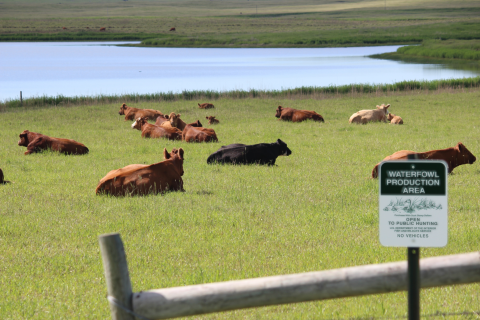Visit Us
Lake Zahl National Wildlife Refuge is managed out of the Crosby Wetland Management District Headquarters. The refuge is open to deer and upland game bird hunting (specific regulations apply), photography, and wildlife viewing.
Location and Contact Information
- Lake Zahl National Wildlife RefugeView DetailsC/O Crosby Wetland Management District 10100 Highway 42 NW Crosby, ND 58730-9399
About Us
The prairies of northwest North Dakota are home to an abundance of wildlife. Lake Zahl National Wildlife Refuge lies within the Prairie Pothole Region, otherwise known as the “Duck Factory of North America". A vast expanse of grassland dotted with numerous small wetlands creates a highly productive area for waterfowl production. Despite the widespread land conversion, approximately 50 percent of North America’s breeding waterfowl population is still produced within the Prairie Pothole Region. The refuge was established primarily to protect this waterfowl breeding and nesting habitat.
What We Do
The Crosby Wetland Management District manages land in Divide, Burke and Williams counties, North Dakota for the benefit of migratory and resident wildlife. This includes monitoring and actively managing land, maintaining cooperative agreements with private landowners, administration of U.S. Fish and Wildlife Service wetland and grassland easements, and coordination with partners and stakeholders.





















